The United States Armed Forces are the military forces of the United States. The armed forces consist of six service branches: the Army, Marine Corps, Navy, Air Force, Space Force, and Coast Guard. All six armed services are among the eight uniformed services of the United States.

The 160th Special Operations Aviation Regiment (Airborne), abbreviated as 160th SOAR (A), is a special operations force of the United States Army that provides helicopter aviation support for special operations forces. Its missions have included attack, assault, and reconnaissance, and these missions are usually conducted at night, at high speeds, low altitudes, and on short notice.

The United States Army Special Operations Command (Airborne) (USASOC ( YOO-sə-sok)) is the command charged with overseeing the various special operations forces of the United States Army. Headquartered at Fort Liberty, North Carolina, it is the largest component of the United States Special Operations Command. It is an Army Service Component Command. Its mission is to organize, train, educate, man, equip, fund, administer, mobilize, deploy and sustain Army special operations forces to successfully conduct worldwide special operations.

The Boeing MH-6M Little Bird and its attack variant, the AH-6, are light helicopters used for special operations in the United States Army. Originally based on a modified OH-6A, it was later based on the MD 500E, with a single five-bladed main rotor. The newest version, the MH-6M, is based on the MD 530F and has a single, six-bladed main rotor and four-bladed tail rotor.
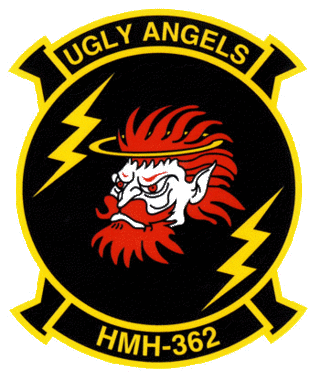
Marine Medium Tiltrotor Squadron 362 (VMM-362) is a United States Marine Corps squadron that operates MV-22 Osprey. The squadron, known as the "Ugly Angels", was reactivated on 17 August 2018 at Marine Corps Air Station Miramar, California.
In the United States Marine Corps, a Marine Air–Ground Task Force is the principal organization for all missions across the range of military operations. MAGTFs are a balanced air–ground, combined arms task organization of Marine Corps forces under a single commander that is structured to accomplish a specific mission. The MAGTF was formalized by the publishing of Marine Corps Order 3120.3 in December 1963, "The Marine Corps in the National Defense, MCDP 1-0". It stated:
A Marine air–ground task force with separate air ground headquarters is normally formed for combat operations and training exercises in which substantial combat forces of both Marine aviation and Marine ground units are included in the task organization of participating Marine forces.
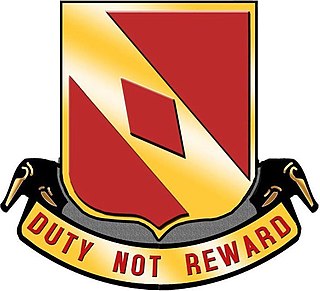
Aerial rocket artillery is a type of armed helicopter unit that was part of the artillery component of the United States Army's two airmobile divisions during the Vietnam War. Controlled by division artillery and not the aviation group, the 2nd Battalion, 20th Artillery, 1st Cavalry Division and the 4th Battalion, 77th Artillery, 101st Airborne Division, along with Battery F, 79th Artillery, 1st Cavalry Division, were the only ARA units fielded during that conflict. The ARA concept disappeared from Army aviation by the mid-1970s, replaced by more generic attack aviation units.

The United States Marine Corps is organized within the Department of the Navy, which is led by the Secretary of the Navy (SECNAV). The most senior Marine commissioned officer is the Commandant of the Marine Corps, responsible for organizing, recruiting, training, and equipping the Marine Corps so that it is ready for operation under the command of the unified combatant commanders. The Marine Corps is organized into four principal subdivisions: Headquarters Marine Corps, the Operating Forces, the Supporting Establishment, and the Marine Forces Reserve.

The United States Army Aviation Branch is a army aviation branch of the United States Army and the administrative organization that is responsible for doctrine, manning and configuration for all army aviation units. This branch was formerly considered to be one of the combat arms branches, but is today included within the "Maneuver, Fires and Effects" (MFE) classification, in accordance with current U.S. Army organizational doctrine.
Task Force Hawk was a U.S. military unit constructed and deployed by General Wesley Clark to provide additional support to NATO's Operation Allied Force against the Yugoslavian government during the 1999 unrest in the Serbian province of Kosovo. The task force was to operate from March 1999 until June 1999 when Slobodan Milošević withdrew the Yugoslavian Army from Kosovo.

United States Army, Japan (USARJ) is a Major Command of the United States Army. It consists of operating port facilities and a series of logistics installations throughout Honshū and Okinawa. USARJ participates actively with the Japan Ground Self-Defense Force in bilateral training exercises and the development of bilateral plans. It commands and supports United States Army assigned units, attached units, and augmentation forces and employs these forces in support of the commander. USARJ maintains and strengthens the credibility of deterrent power in the Pacific through maintenance of defense facilities, war reserves and operational project stocks. USARJ is headquartered at Camp Zama.

The 12th Combat Aviation Brigade is a Combat Aviation Brigade of the United States Army. It was first organized as the 12th Aviation Group at Fort Moore, Georgia, on 18 June 1965.

The Special Forces Group is the Japan Ground Self-Defense Force's special forces unit established on March 27, 2004.

The 864th Engineer Battalion is a combat engineer battalion of the United States Army based at Joint Base Lewis-McChord, Washington. The battalion is a subordinate unit of 555th Engineer Brigade.

The United States Army Alaska was a military command of the United States Army located in the U.S. state of Alaska. A subordinate command of I Corps, USARAK was the ground element of the Alaskan Command. USARAK was headquartered at Joint Base Elmendorf-Richardson and commanded by a major general. USARAK was reflagged as the 11th Airborne Division on June 6, 2022.
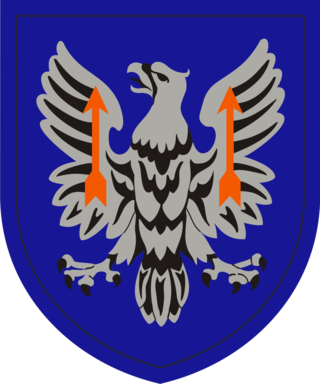
The 11th Expeditionary Combat Aviation Brigade is a Combat Aviation Brigade in the United States Army Reserve. The unit's lineage can be traced to the prior lineage and insignia of the 11th Aviation Group which was last headquartered in Illesheim, Germany in 2005. It is one of two aviation brigades of Army Reserve Aviation Command. The brigade consists of a headquarters company, two Black Hawk assault battalions, and one fixed wing battalion. The brigade was activated in its current formation on 16 September 2016.

The 560th Battlefield Surveillance Brigade, based at the Cumming Regional Readiness Center in Cumming, Georgia, was a major command of the Georgia Army National Guard. It was organized as the first battlefield surveillance brigade in the Army National Guard.
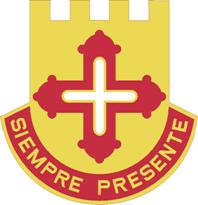
The Puerto Rico Army National Guard (PRARNG) — officially designated in Spanish as Guardia Nacional Terrestre de Puerto Rico, but colloquially known as Ejército de la Guardia Nacional de Puerto Rico — is the Army National Guard of the archipelago of Puerto Rico which, together with the Puerto Rico Air National Guard, comprises the Puerto Rico National Guard. PRARNG is the ground-component of the Puerto Rico National Guard under control of the governor of Puerto Rico, currently Pedro Pierluisi, that performs missions equivalent to those of the Army National Guards of the different states of the United States, including ground defense, disaster relief, and control of civil unrest.
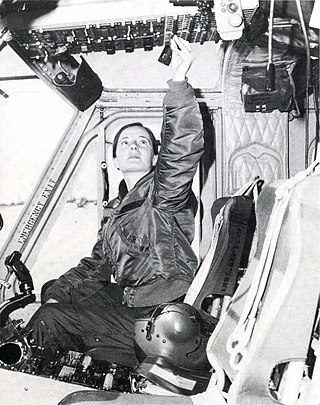
Sally D. Murphy is a retired colonel who served as a United States Army Aviator. She was the first female U.S. Army helicopter pilot to graduate from flight school at Fort Rucker, Alabama on June 4, 1974. She served as a leader for units within the 330th Army Security Agency Company, 1st Infantry Division, the 62nd Aviation Company, and the 78th Aviation Battalion. In 2009, Murphy received the U.S. Army Freedom Team Salute Veteran Commendation to commemorate her 27 years of service and her place in military history.

The United States Army Special Operations Aviation Command (USASOAC) provides command and control, executive oversight, and resourcing of U.S. Army Special Operations Command (USASOC) aviation assets and units in support of national security objectives. USASOAC is responsible for service and component interface; training, doctrine, and proponency for Army Special Operations Aviation (SOA); system integration and fleet modernization; aviation resource management; material readiness; program management; and ASCC oversight. USASOAC was established 25 March 2011 consisting of 135 headquarters soldiers and subordinate units totaling more than 3,300 personnel, include the 160th Special Operations Aviation Regiment (Airborne), (160th SOAR (A)) which features 4 Aviation Battalions, the USASOC Flight Company, the Special Operations Aviation Training Battalion, the Systems Integration Management Office, and the Technology Application Projects Office. The first commander of USASOAC was Brig Gen. Kevin Mangum.

















